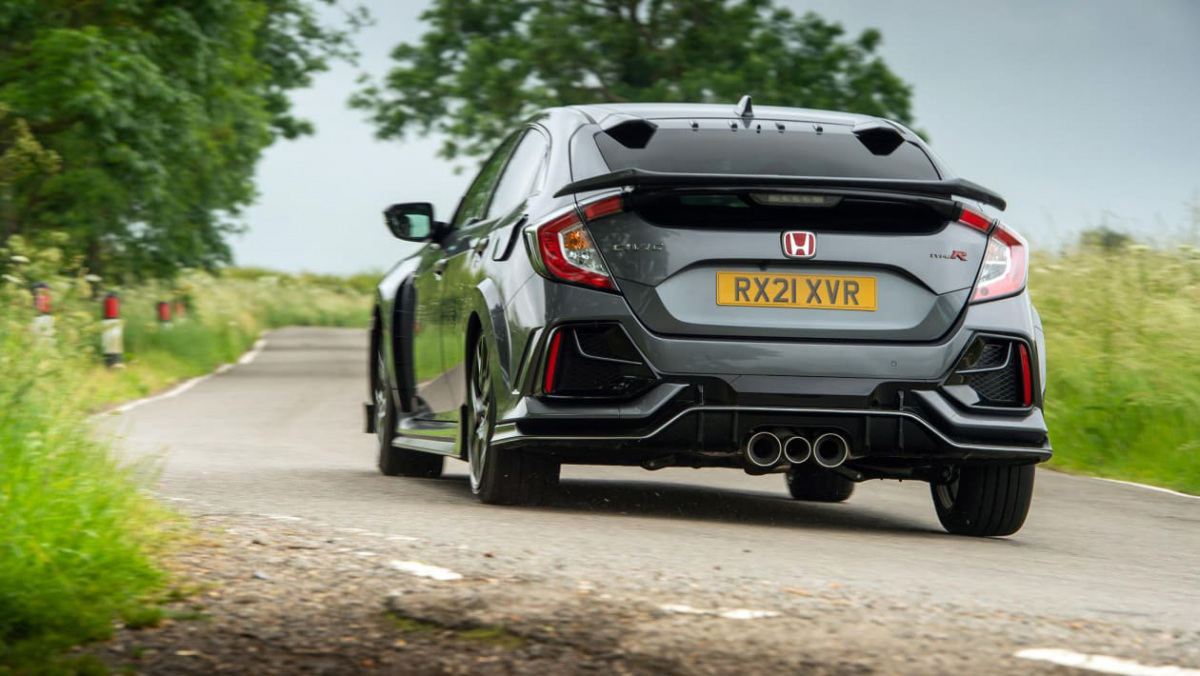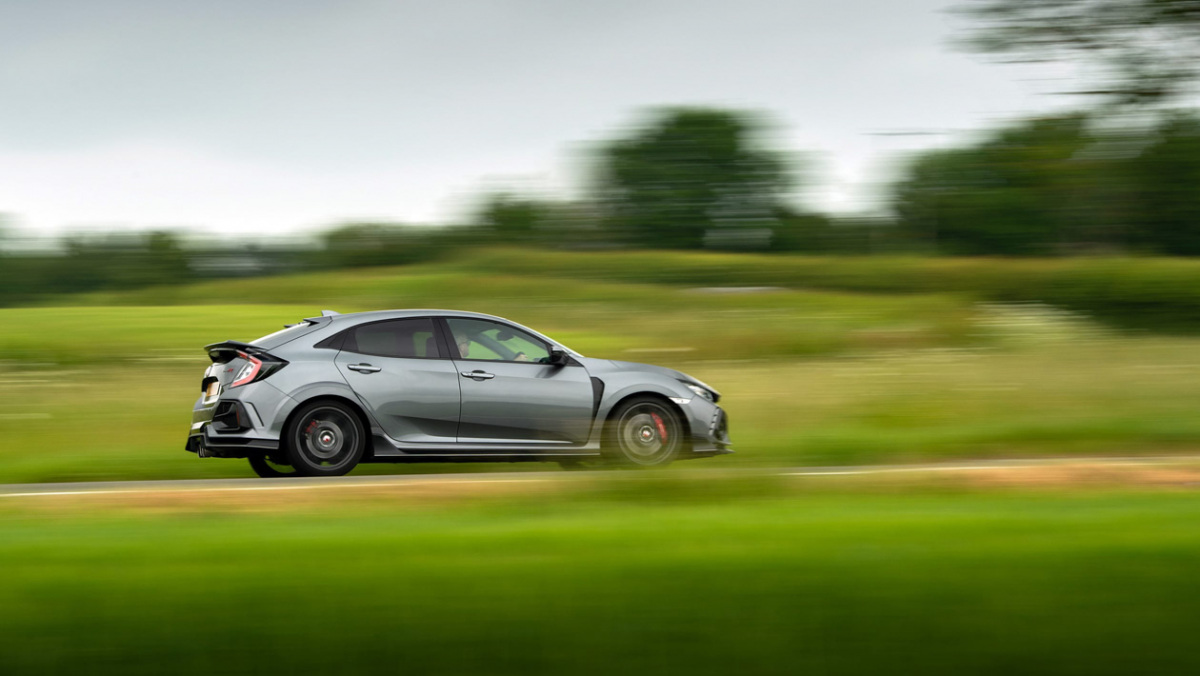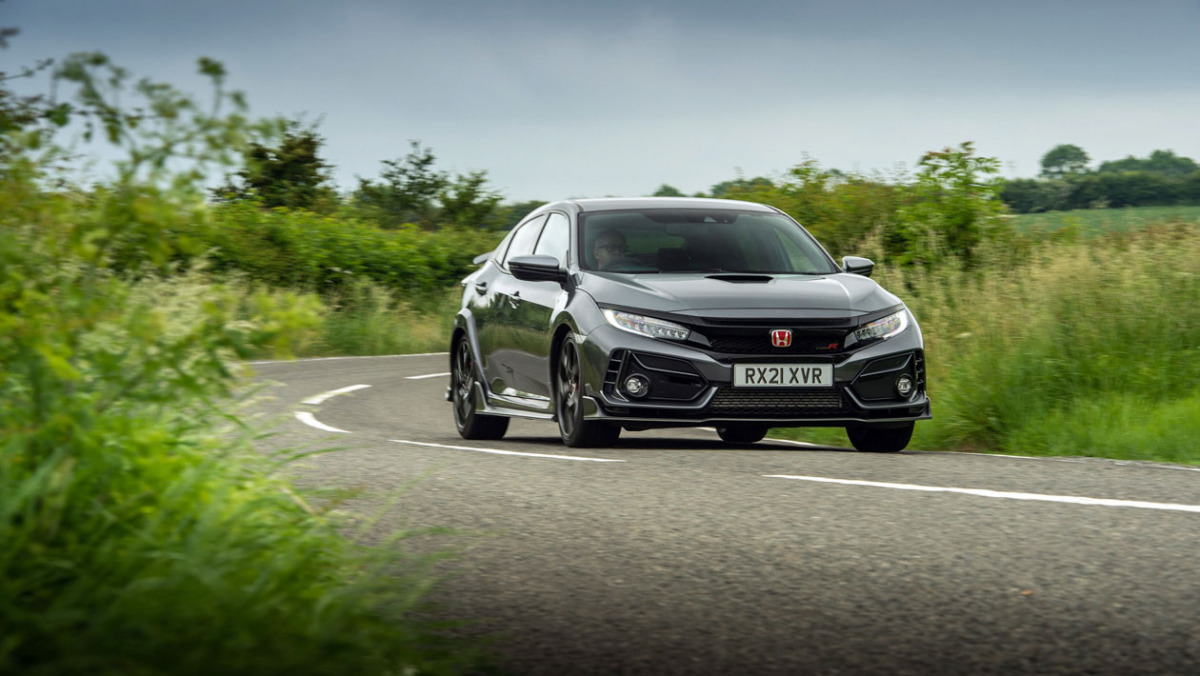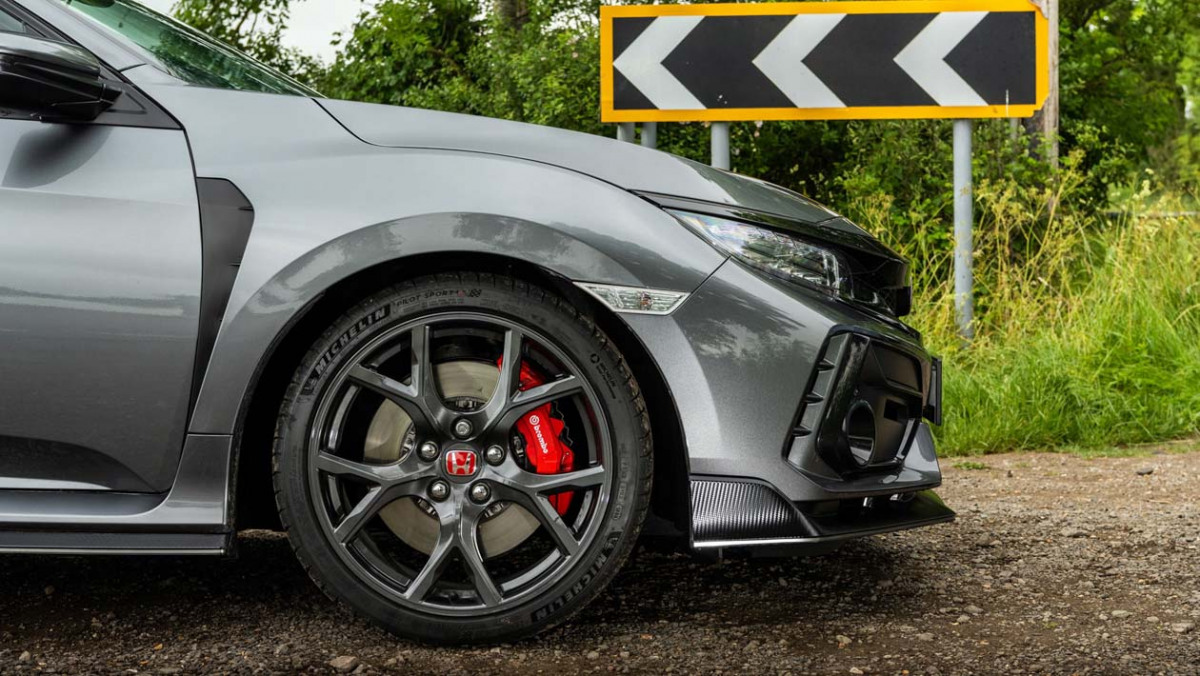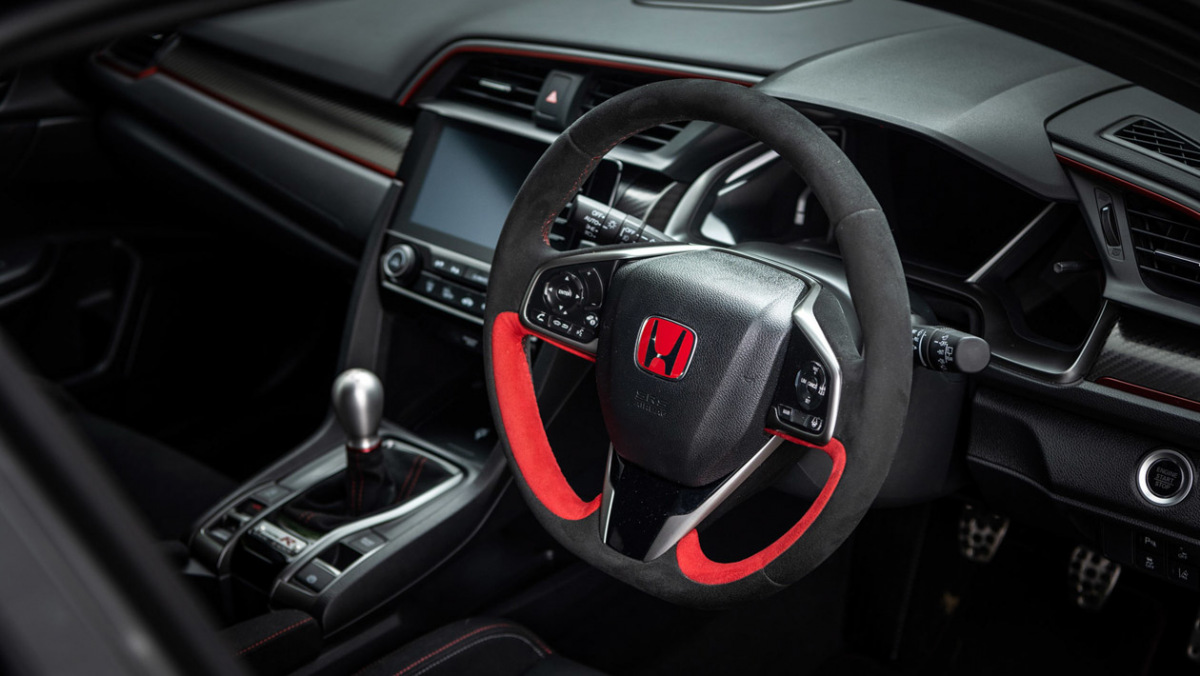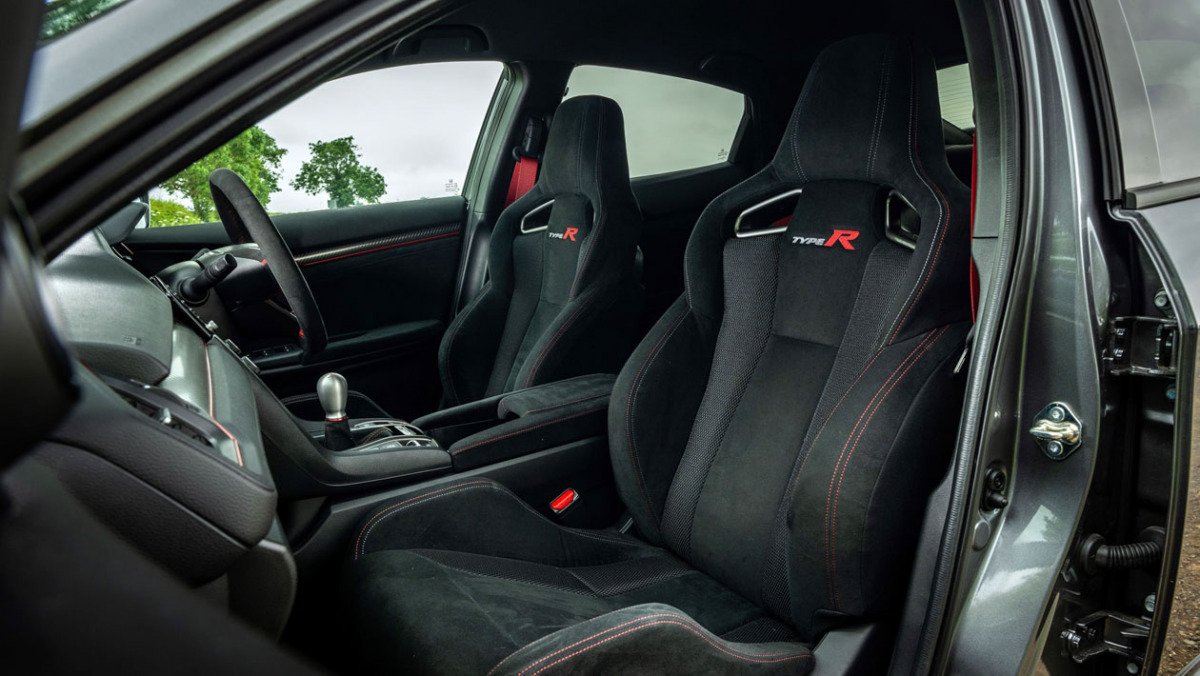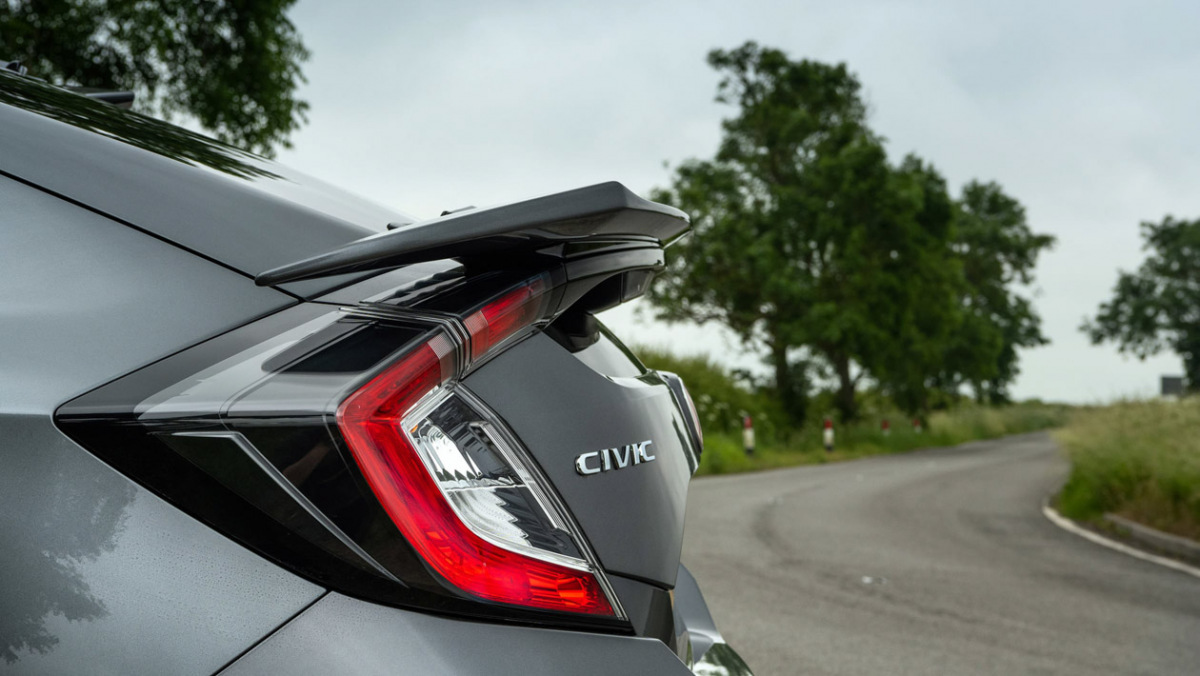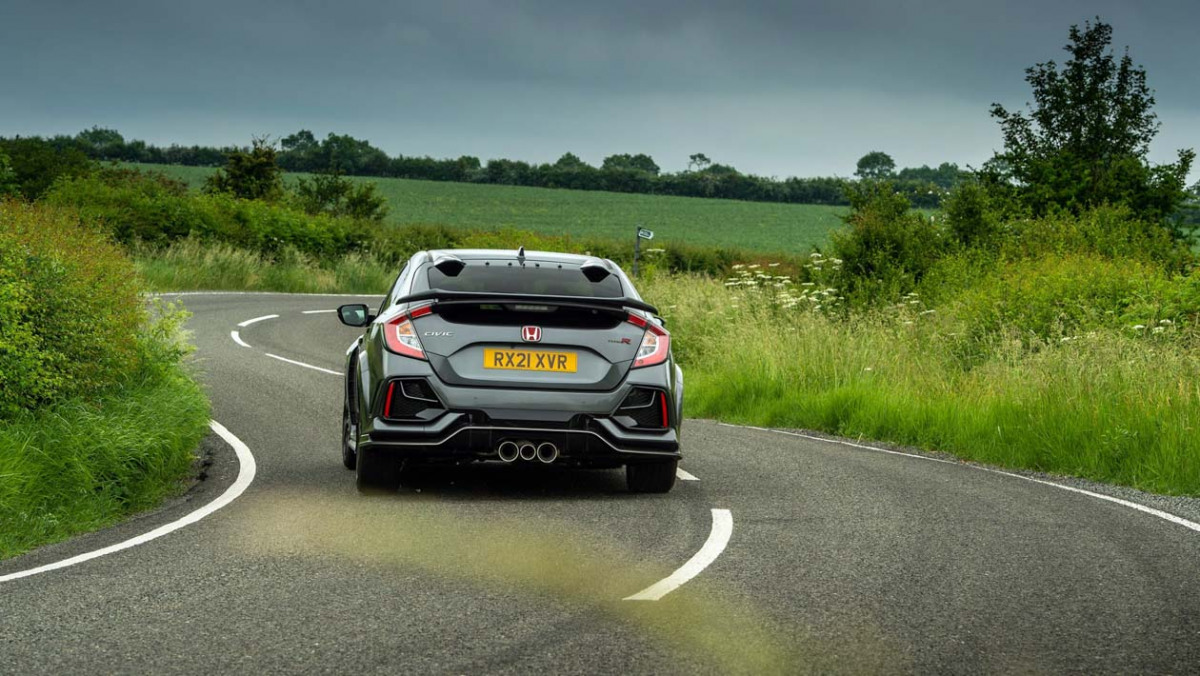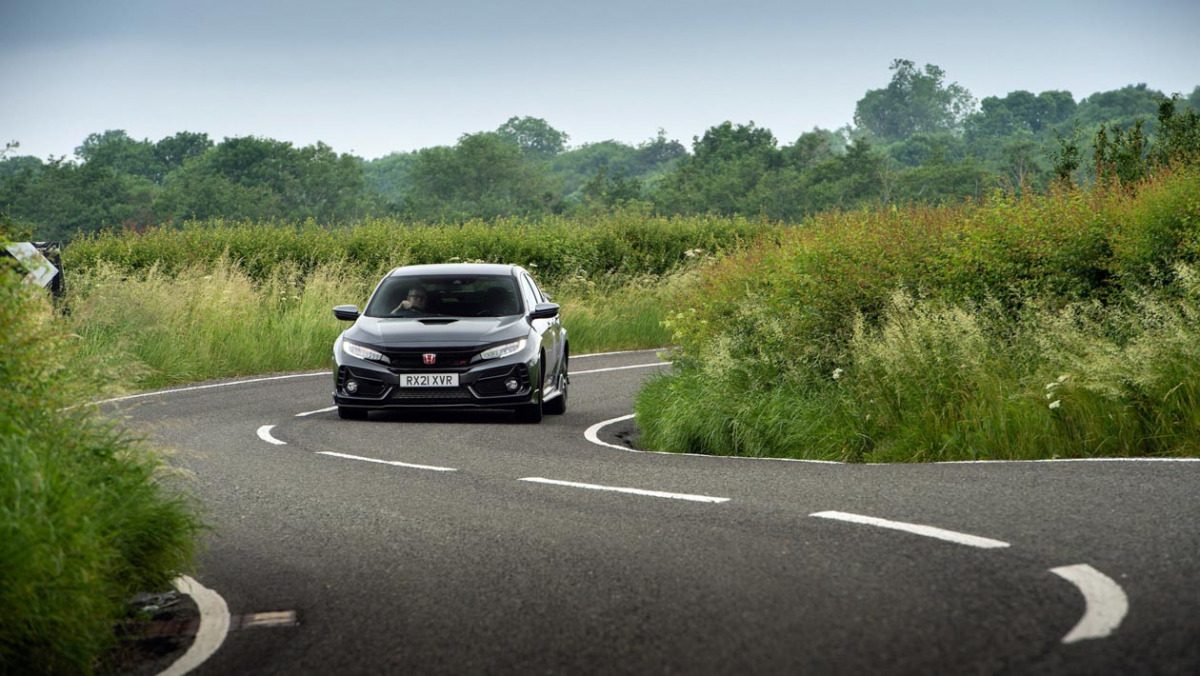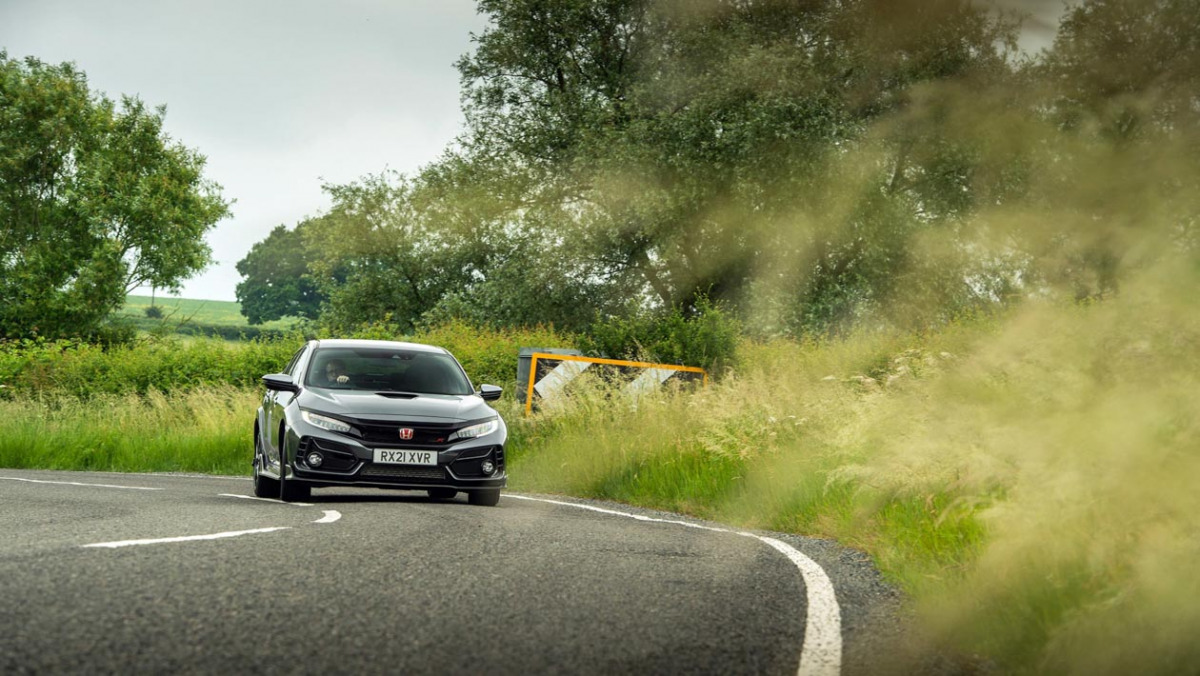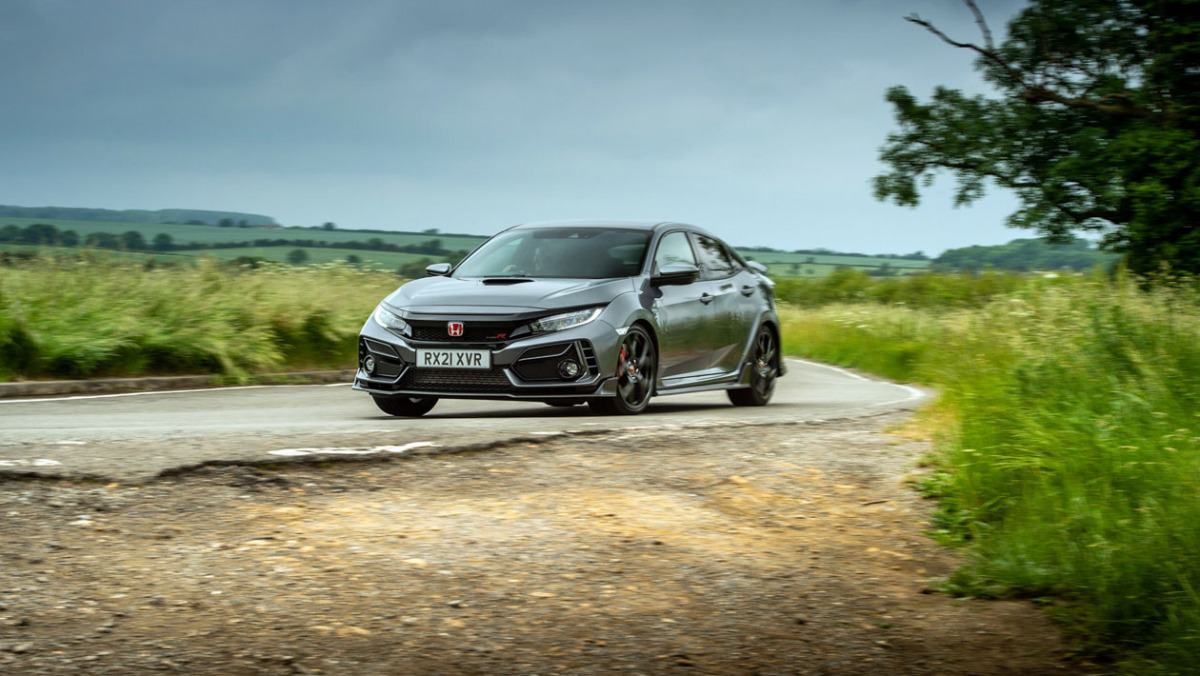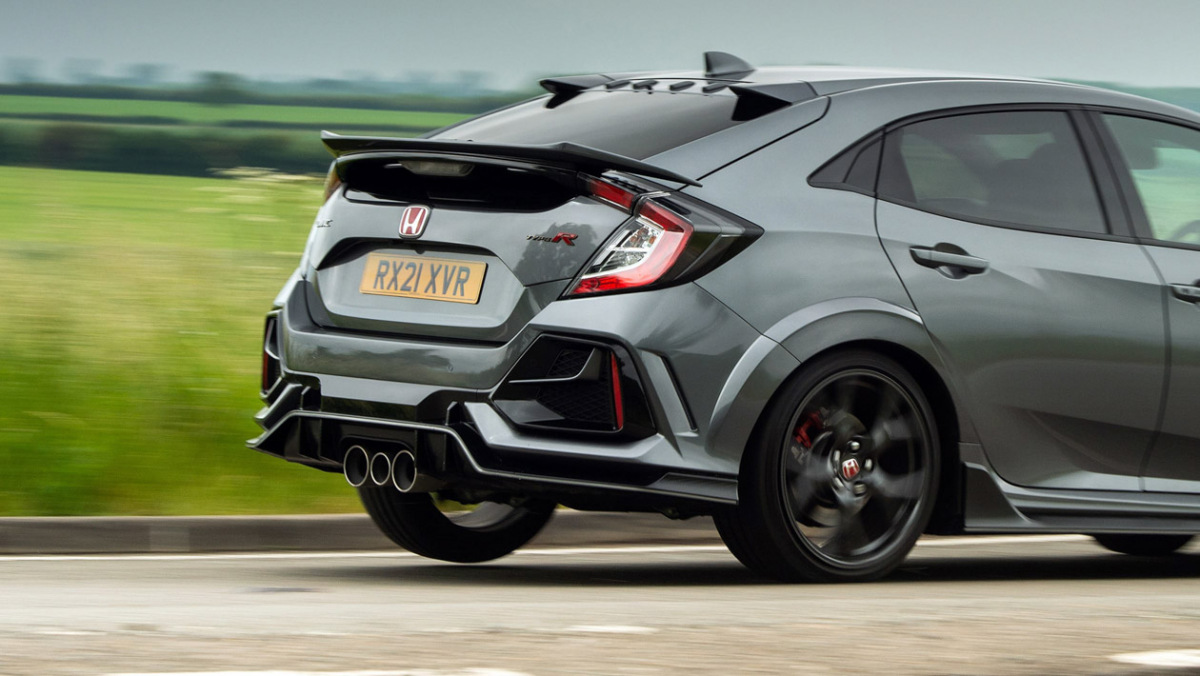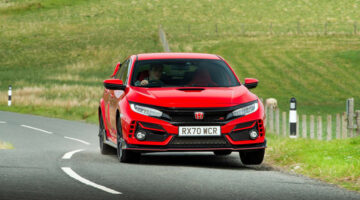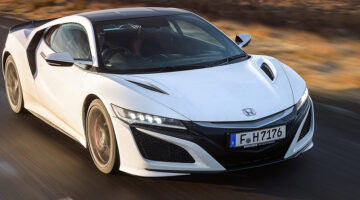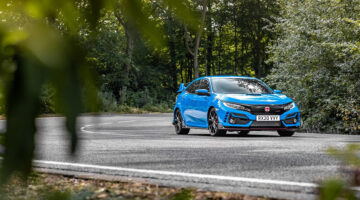Another cracking Honda Civic Type R, and its extra civility doesn’t come at the expense of capability
| Just as magnificent to drive as the normal Type R, top-level calibration just like with a GT3 | |
| Still doesn't look right |
The FK8 Honda Civic Type R has found plenty of favour in evo since it first wowed us back in 2017, so when time came for a mid-cycle update we were glad to hear the package had been only subtly refreshed. In addition to updating both the standard and GT models, Honda introduced two further variants, widening the Type R’s appeal at either end of the spectrum with the stripped-down Limited Edition at one end, and the more visually conservative Sport Line we’re driving here at the other.
So while the Sports Line was never going to turn into something that looks at home on the roundel in front of the Hôtel de Paris, it is an attempt to lower the visual volume and make it more attractive to a wider audience. Yet the changes have gone beyond the removal of that rear wing and some of its red pinstriping, as Honda’s engineers were also put to work on improving interior refinement and everyday useability, in the process downsizing the wheels, adding more sound deadening into the interior and throwing in all of the more expensive GT model’s toys.
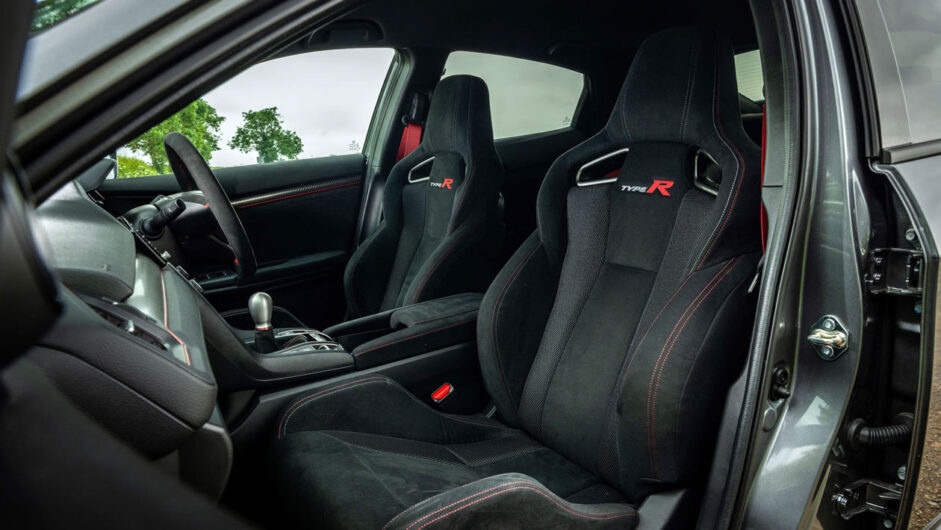
On initial impression, the Sport Line certainly has less of a shouty demeanour visually, even if in reality it’s only the low-set wing and a smaller set of wheels that are physically different. This is no doubt helped along by the grey paintwork of our test car, but the removal of the red pinstripes and addition of those graphite grey wheels make all three of the colour options less obnoxious, sort of.
Yet in reality the Sport Line is in many ways the least visually resolved of all Type Rs as the new low wing sits oddly with the super-aggressive bodywork, revealing the Civic’s humpback silhouette that’s otherwise disguised by the standard wing. The Type R’s strangest accoutrements such as the Sonic the Hedgehog roof spines and millefeuille bumpers of fake carbonfibre and intakes are still present, however, so there’s really only so much impact the swap to a low-form wing would make.
The new 19-inch wheels also seem to be completely overwhelmed by the new body, appearing lost in the arches, both in diameter and offset, hiding away in there like a gerbil in its burrow taking refuge from the barn owl that’s about to have it for its dinner. Inside, things are essentially the same as all Type Rs, save for the switch to black Alcantara for the bucket seats.
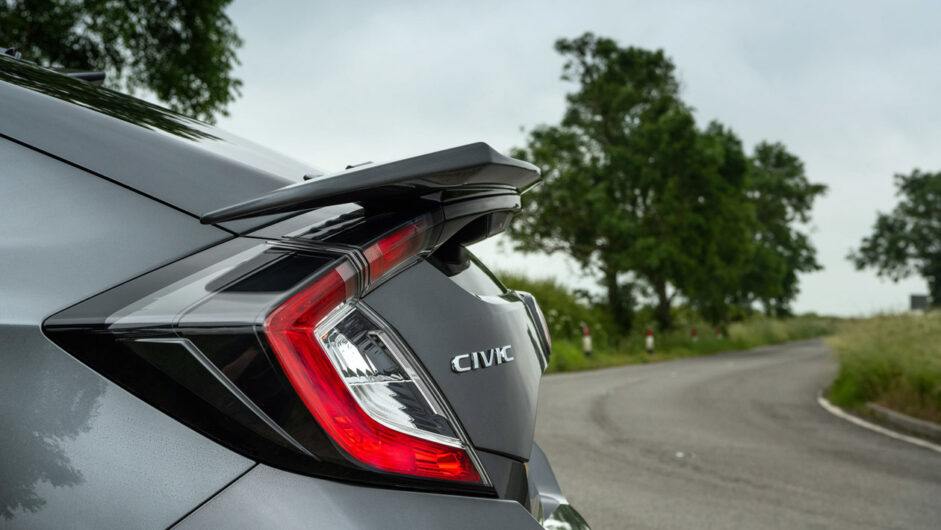
How does this relate on the road? Pretty well, in all honesty. The Sport Line is indeed more refined, and the ride quality, which is already pretty impressive in the standard model on 20s, is even better – it’s certainly not soft, but pliant, acutely controlled and well damped. But all of this extra comfort and conservatism is beyond the point when it comes to the Civic Type R because the Sport Line, like all Type Rs, is quite simply the most astonishingly brilliant hot hatchback to drive. In fact, calling it a hot hatchback seems a disservice to it, because like a DC2 Integra Type R, the Civic Type R isn’t so much a hot hatchback as a brilliant sports car that happens to be front-wheel drive.
This feeling begins as soon as you slip into the cabin, with a superb driving position placing you at the centre of all the finely honed controls. The steering wheel ahead of you is perfectly sized, thin-rimmed and now covered in Alcantara, the weighted aluminium gearknob positioned high on the relatively tall centre console and with a pivot point directly beneath it.
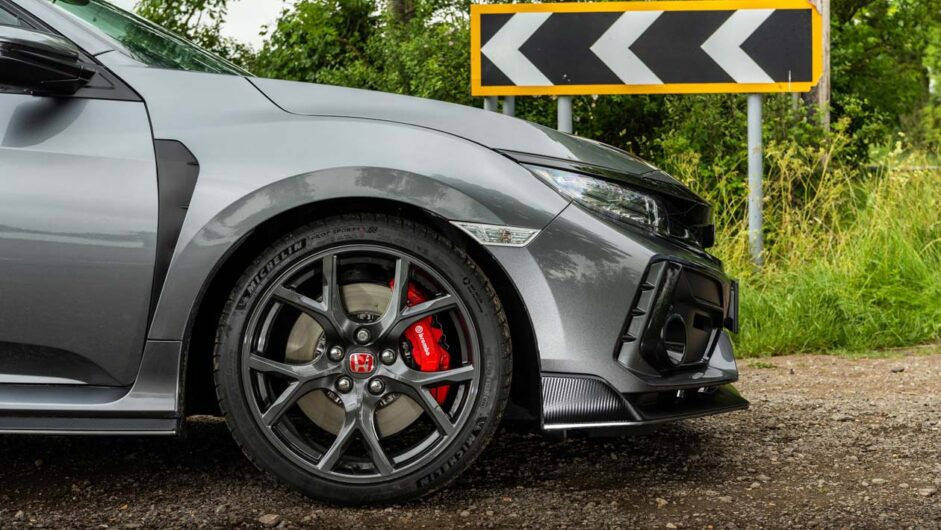
There’s an almost instantaneous connection to the powertrain and chassis when you poke the starter button too, the throttle, steering, clutch and transmission all perfectly matched in weight, precision and action. It just feels so intuitive, there’s little to no acclimatisation required, and you can instantly start driving quickly. When road tester types tell you Type Rs feel like an embodiment of the 911 GT3 in a Japanese hatchback, it’s for precisely this reason. It’s not that there’s nothing to learn with prolonged exposure, as there’s still plenty of tricks waiting to be revealed, but there are no quirks, no dead zones, no points where you replace faith with blind trust.
Turn-in is tenacious, the ill effect of an extra bit of sidewall not at all harming the Type R’s magical geometry, with grip levels almost identical to those of the standard car. Some of this can be explained by the Sport Line’s Michelin Pilot Sport 4 S tyres, but that textural, intuitive steering feel remains almost completely unaffected – a stunning achievement on an electric steering rack with two very different tyres.
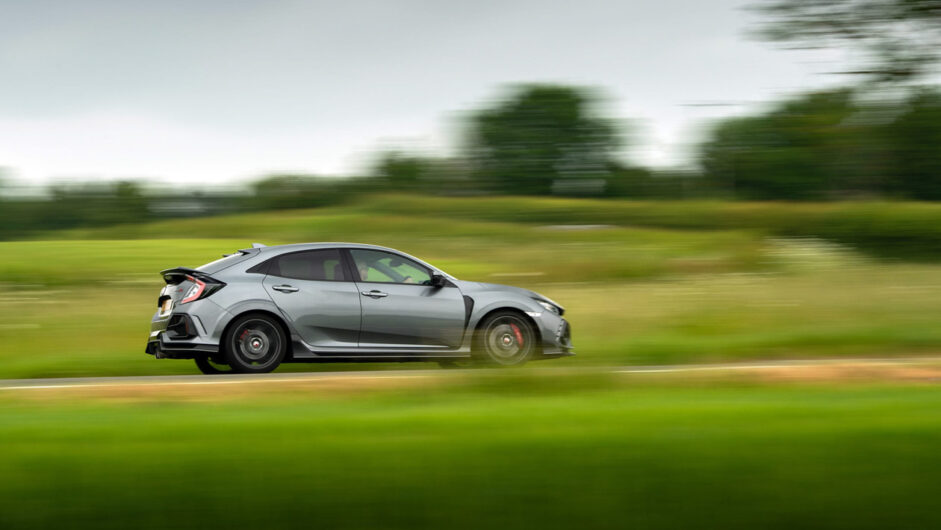
And my word, does the Type R still know how to sniff out grip from every nook and cranny in the road surface, almost as if the tyre pressures are at 10 psi and melting around embedded stones in the road surface to tear you out of every bend. The differential is a big player in this ability, putting the torque on the road without any wastage, and with just enough provocation of the steering wheel to keep you below the point of overworking the front tyres, although you have to be driving at some speed to do so.
The brakes are also superb, with immense power and the most impressive pedal feel. There’s bite at the top of the pedal to reassure, but beyond that point the modulation and feedback through the pedal is a masterclass, making the brake pedal just as able to course correct in a corner as the throttle.
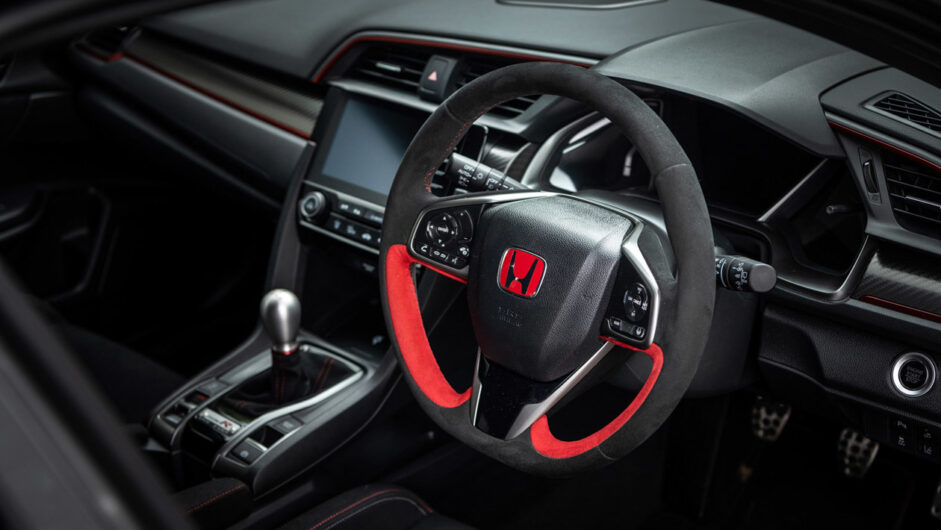
The 316bhp, 2-litre turbocharged four-cylinder powertrain is as potent and effective as in other Type Rs too, having good punch down low so long as the turbos are spooled, yet still building to a satisfying crescendo just below the red line. And the transmission is not just good, but great – a defining feature if the steering, or the brakes, or the chassis itself weren’t all so brilliant.
And what about that extra something? It’s all in the balance – drive the Type R with the sort of intensity that has you completely absorbed and you notice that underneath you, beyond all of those inputs, resides a chassis that’s playful and resilient, with a sweet balance that doesn’t need insane speeds to reveal itself.
The interior might feel a little low-rent in places, and it still doesn’t look quite right, but it’s a fascinating thing to see how even after all this time the Civic Type R has never been more appealing – it just now happens to be available in more flavours. The Sport Line joins the range with a ten per cent increase in refinement and comfort with 97 per cent of the ultimate capability, which sounds like a pretty good compromise to us. In reality, it’s more likely to be a case of whether you go for the wing or not, as either way you’re on to a winner.
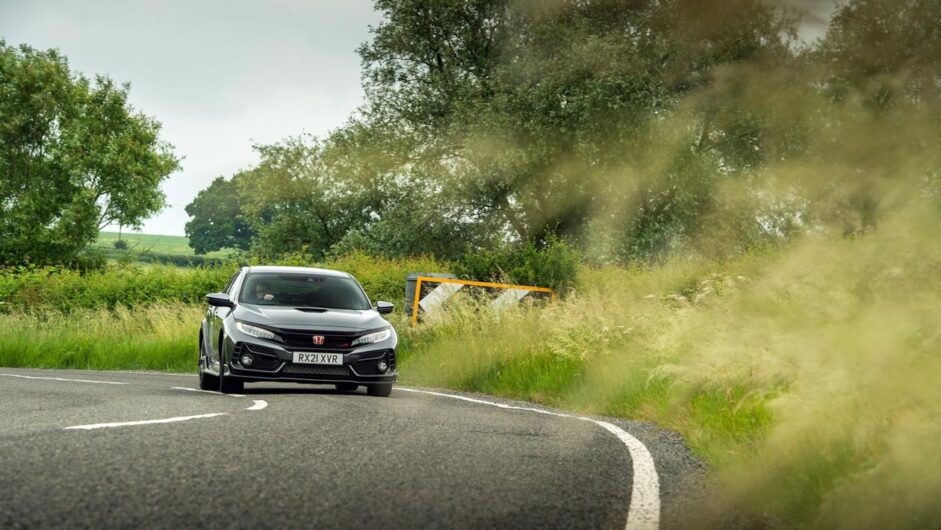
Prices and rivals
Ironically, this is something that the market appears to have picked up too as Civic Type Rs are now becoming something of a hot ticket item, which is highly ironic considering the Swindon plant that builds them is in the process of shutting down production.
In terms of value for money, we can’t think of another car, Sport Line or otherwise, that does so much for so little. As for rivals, it’s still a case of best of the rest, with all VW Group models, from the Cupra Leon and Golf GTI Clubsport to the Golf R all a fair way behind the Civic in terms of capability or involvement. The Renault Mégane RS 300 is a great option, especially with its new dual clutch, and the new Hyundai i30 N is also just about to prove itself.
The good news is, because of a delay in implementing Euro 7 emissions regulations, the Type R’s engine is safe from being killed off by legislation for a few more years. This comes with the fact we’ve seen more than one Type R mule of the cleaner looking, but similarly proportioned next-generation Civic. Now imagine that, a Civic Type R that drives just as well, but doesn’t look like one.
This article originally appeared at evo.co.uk
Copyright © evo UK, Autovia Publishing

